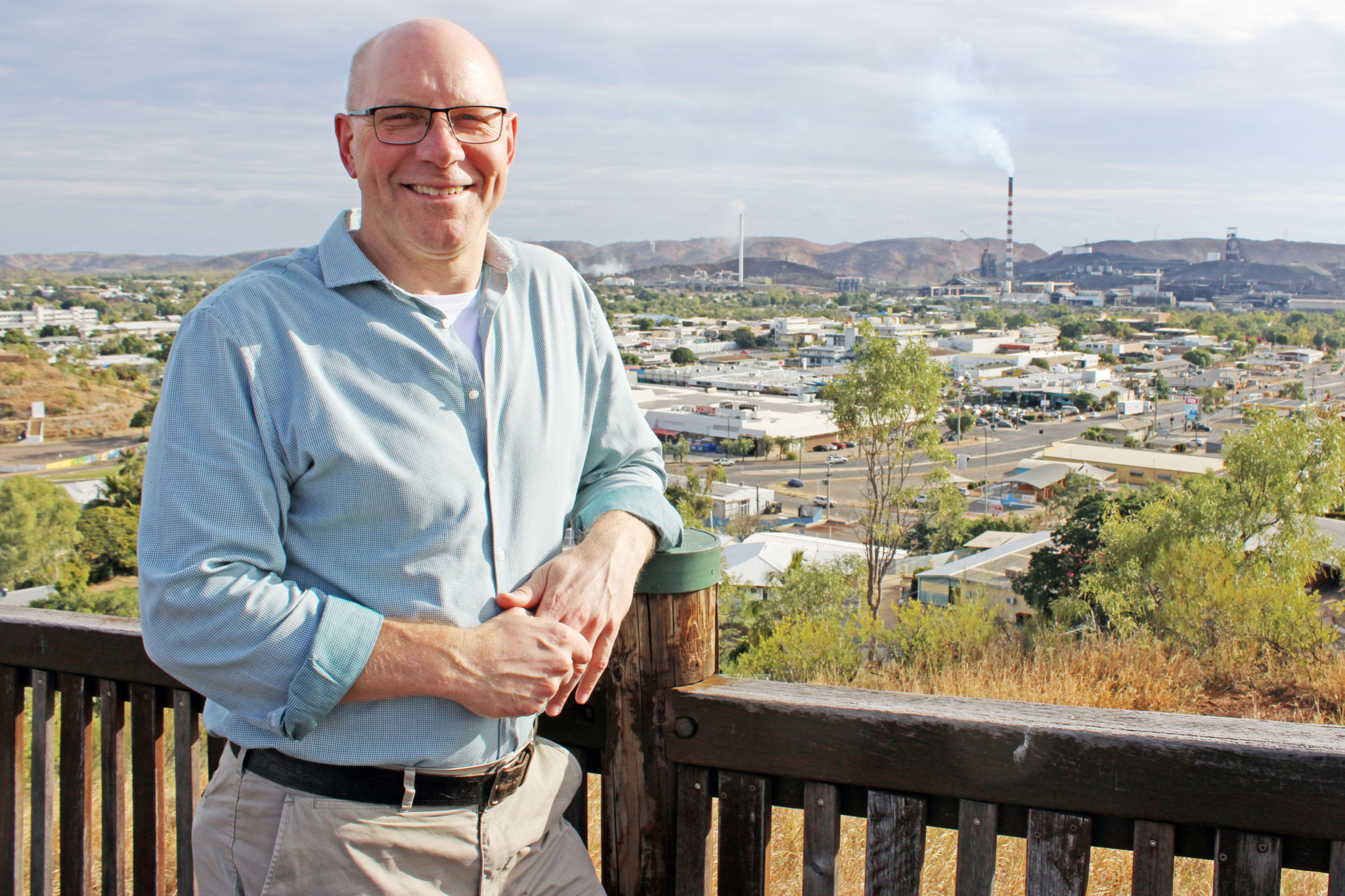Business
7 August, 2024
Mine closures don't have to be disastrous, says academic
Dr Pete Whitbread-Abrutat says there are many ways to use former mines.

With debate and discussion swirling in the city since the announcement of the underground copper closure last year, Mount Isa has been reminded that all mines have a life cycle that includes the end of resource extraction.
And while it is generally expected that mine closures will inevitably lead to rehabilitation that returns the land to a state that closely resembles its appearance prior to mining, there is a growing movement globally that is looking at more entrepreneurial approaches.
The field is called post-mine land reuse and one of its prominent international thinkers is English academic Dr Pete Whitbread-Abrutat, who visited Mount Isa following his address to the Queensland Mining and Engineering Expo last month.
Dr Whitbread-Abrutat has literally written the book on post-mine land reuse – having travelled the global for more than a decade to collate some of the best and wildest examples.
His book is appropriately named, 102 things to do with a hole in the ground.
From giant banana-growing greenhouses in England to theme parks along the German borderlands and open-air libraries in China, Dr Whitbread-Abrutat says there are limitless opportunities for post-mine land use once creative discussion is encouraged.
Looking down at the city from his vantage point at the Mount Isa lookout, Dr Whitbread-Abrutat told North West Weekly that he believed our region was prime real estate to capitalise on.
However, he says that first there needs to be a change of thinking about what rehabilitated land actually looks like.
“When land that used to generate sufficient wealth to support a large community all of a sudden stops, we have to ask how can we use that land in a different way to create more value, in an economically, environmentally and socially viable manner to support the same community” he explained.
“If you have a route that has always worked, even if it doesn’t work brilliantly, then people will ask why they should change anything.
“The government regulation forms around that practice and the mining company practices form around that route also.
“Mining companies have done things the same way forever, but I believe the mentality of all affected stakeholders has to change.
“We need to change the mindset of stakeholders by bringing new people into the conversation – beyond just government people and mining people –bringing in artists and scientists and entrepreneurial thinkers to broaden the perspective that can lead to new ideas.
“We are talking about attempting to create something more worthwhile and valuable with that mining land – how to improve mining land use after mining beyond the conventional image of a grassy field with a cow in it or a pit lake.
“While that image might be environmentally viable, it is not viable if there is a mining community that is affected and needs to continue to support itself.”
With the global market for land rehabilitation and reuse expected to be worth more than $40 billion in the coming years, Queensland not for profit enviroMETS hosted two workshops in Mount Isa, which were led by Dr Whitbread-Abrutat, and featured representatives from local and state government, resources sector and social groups.
Dr Whitbread-Abrutat said while the workshops did not address specific localised issues confronting the mining sector, they did encourage participants to become more open minded and free flowing in their thinking towards creative, entrepreneurial and productive post-mining land strategies.
“The workshop was really encouraging across the whole range of stakeholders - we were having proper, grown-up conversations around progressive land reuse – I didn’t see any cynicism in there and all sorts of great ideas were being thrown around,” he said.
“That’s the first step on the journey to a new paradigm about what we can do with old mine sites. Unless we can get people together to have these conversations, nothing will change.
“I have only been in Mount Isa for a few hours but I was really impressed with the conversations we were having here.”
After a day observing Mount Isa, Dr Whitbread-Abrutat drew on an example in Canada, where an isolated traditional mining town north of Toronto was facing industry closure and banded together to transform the city’s disused mining site into a major international training centre for underground resource extraction – that now uses remote technology to educate students located all over the world.